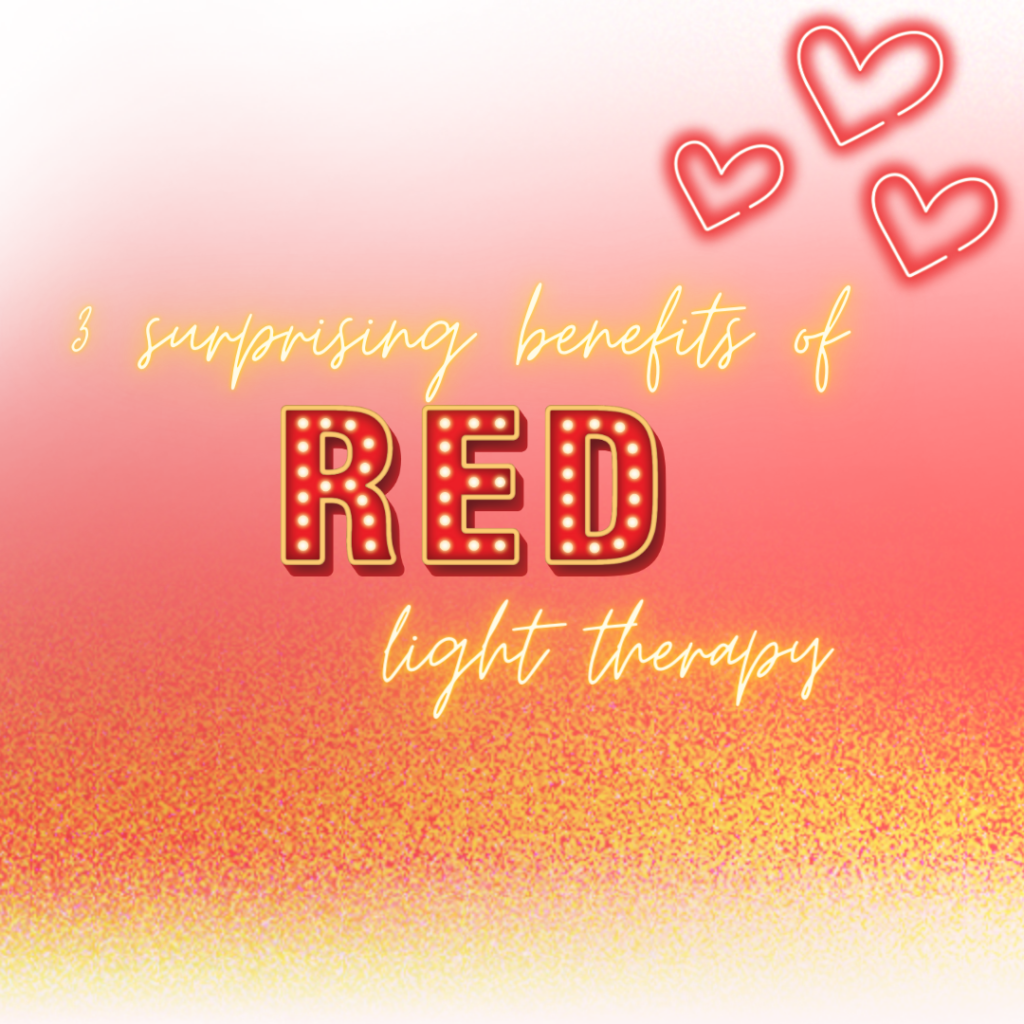
Red light therapy, also known as photobiomodulation, is popular for its revolutionary weight loss results, but has many other health benefits. This non-invasive treatment uses low-level red and near-infrared light to stimulate various cellular processes in the body. Red light therapy has been studied for its positive effects on a wide range of health conditions and concerns. Below is a high level list of 10 benefits of red light therapy that may surprise you.
- Youthful Appearance through Skin Health
Red light therapy is known for its rejuvenating effects on the skin. Studies have shown that it can stimulate collagen production, reduce wrinkles, and improve skin tone and texture. Studies have found that red light therapy significantly improved skin complexion and increased collagen density, resulting in a more youthful appearance and improved overall beauty. After a red light therapy session, you will immediately notice improved skin appearance and an overall youthful glow. - Pain Relief and Reduced Inflammation
Chronic pain sufferers have reported relief from conditions such as osteoarthritis and fibromyalgia through red light therapy. This treatment has anti-inflammatory properties that can reduce pain and swelling. A study published in the Journal of Photochemistry and Photobiology in 2011 demonstrated that red light therapy effectively reduced pain and improved joint function in osteoarthritis patients. As Americans are burdened with increasing rates of chronic illness and cancers, side-effect and dependency free solutions like red light therapy for managing inflammation and pain become vital to improving quality of life. - Accelerated Wound Healing
Red light therapy promotes tissue repair and accelerates wound healing. It stimulates the production of fibroblasts and collagen, which are essential for wound closure. Research shows that red light therapy can significantly enhance wound and nerve healing in both animal and human studies, which is useful post-surgery or after an accident. - Improved Mental Health and Mood
Red light therapy positively impacts mental health by stimulating the release of serotonin and endorphins, which are mood-enhancing neurotransmitters. A study published in JAMA Psychiatry in 2016 found that transcranial red and near-infrared light stimulation led to significant improvements in major depressive disorder. Red light therapy is helpful in overall mood regulation, which means it can complement treatments for bipolar disorder, PTSD, CPTSD, anxiety, ADHD, and other mental health concerns. It’s also a great tool for support in times of grief and stress. As opposed to other treatments, red light therapy has virtually no side effects and requires no prescription. - Hair Regrowth
For those struggling with hair loss, red light therapy has shown promise in promoting hair regrowth in men and women. It increases blood flow to hair follicles and stimulates the production of keratin, the protein responsible for hair growth. A 2021 study in the Annals of Dermatology demonstrated the efficacy of red light therapy in treating androgenetic alopecia (male pattern baldness). - Hormonal Balance
Red light therapy may help regulate hormones, particularly in women. Some studies suggest that it can alleviate symptoms of hormonal imbalances, such as polycystic ovary syndrome (PCOS), Premenstrual dysphoric disorder (PMDD), and menopausal symptoms, by modulating the endocrine system. - Improved Sleep Quality
Exposure to red light therapy in the evening may help reset the body’s internal clock and improve sleep quality. A study published in the journal Sleep Medicine in 2019 found that red light exposure in the evening improved sleep parameters and reduced insomnia symptoms. Since starting red light therapy, some New Beginnings clients have reduced or eliminated the need for prescription sleep medications. - Enhanced Athletic Performance
Athletes have started using red light therapy to improve performance and accelerate post-exercise recovery. Research published in the Journal of Athletic Training in 2018 indicated that red light therapy reduced muscle fatigue and improved endurance in athletes. - Improved Cognitive Function
Red light therapy may have cognitive-enhancing effects by increasing cerebral blood flow and oxygenation. A study in the journal Photomedicine and Laser Surgery in 2018 demonstrated that transcranial red light therapy could improve cognitive function in healthy young adults. Red light therapy is useful in cases of Traumatic Brain Injury (TBI), Dementia, ADHD, and aging among other conditions that may impact cognition. - Reduction of Acne and Scars
For individuals with acne-prone skin, red light therapy can be a valuable tool. It has been shown to reduce acne lesions and improve the appearance of acne scars by reducing inflammation and promoting tissue repair. Red light therapy can reduce the frequency and severity of outbreaks as well.
Red light therapy is a versatile and promising treatment with a growing body of research supporting its various health benefits. Our clients often come in for life-changing weight loss results only to find other aspects of their health, beauty, and wellness radically transformed. From skin rejuvenation and pain relief to improvements in mental health and cognitive function, the applications of red light therapy are wide-ranging. Red light can complement existing therapies and provide a non-invasive, drug-free approach to improving overall health and well-being.
Barolet, D. (2008). Light-emitting diodes (LEDs) in dermatology. Seminars in Cutaneous Medicine and Surgery, 27(4), 227-238.
Bjordal, J. M., et al. (2011). A systematic review with meta-analysis of the effect of low-level laser therapy (LLLT) in cancer therapy-induced oral mucositis. Supportive Care in Cancer, 24(8), 3985-3995.
Shen, C., et al. (2013). Low-Level Laser-Accelerated Peripheral Nerve Regeneration within a Reinforced Nerve Conduit across a Large Gap of the Transected Sciatic Nerve in Rats. Evidence Based Complementary and Alternative Medicine.
Cassano, P., et al. (2016). Near-infrared transcranial radiation for major depressive disorder: proof of concept study. Psychiatry Journal, 2016.
Yang K., et al. (2021) Hair Growth Promoting Effects of 650 nm Red Light Stimulation on Human Hair Follicles and Study of Its Mechanisms via RNA Sequencing Transcriptome Analysis. Ann Dermatol. Annals of Dermatology, 2021.
de Brito Vieira, W. H., et al. (2018). Transcranial and systemic photobiomodulation for major depressive disorder: A systematic review of efficacy, tolerability and biological mechanisms. Journal of Affective Disorders, 243, 262-273.
Souza, L., et al. (2019). Red light at night attenuates the rise in melatonin production in response to magnetic field exposure. Sleep Medicine, 60, 109-114.
Leal Junior, E. C., et al. (2018). Effects of low-level laser therapy (LLLT) in the development of exercise-induced skeletal muscle fatigue and changes in biochemical markers related to post-exercise recovery. Journal of Athletic Training, 53(5), 470-476.
Lee, S. Y., et al. (2007). A prospective, randomized, placebo-controlled, double-blinded, and split-face clinical study on LED phototherapy for skin rejuvenation: clinical, profilometric, histologic, ultrastructural, and biochemical evaluations and comparison of three different treatment settings. Journal of Photochemistry and Photobiology, 88(1), 51-67.









